The Top 12 Spring 2020 Menswear Collections
What a season! The Spring 2020 menswear shows sprawled far across the globe over weeks on end, so much so that they kept the Vogue Runway reviewing team running from a beach in Malibu to New York to London, Florence, Milan, Paris, and finally to a field of lavender in Provence, France, last night. It was important business—and not just for business sake. Though bad on the carbon emission debt, which fashion is constantly stacking up, content-wise and thinking-wise, the season amounted to one big 21st-century symposium on masculinity. What does that even mean today?
Here was the top-line: Anything which circumnavigates, subverts, or outright opposes corporate white manhood is in. Men against the patriarchy. Designers against toxic manhood. Boys for joy. Everyone up in arms against fear.
That might be putting it a bit strongly, but consider all the tendencies—the talk about recapturing childhood innocence; the vector which took so many on a mind trip to Marrakech (code for dropping out, spirituality, and finding yourself); all the empowered expressions of male sexuality, frankly out in the open; and not least of all the gloriously pretty colors and sense of chic being brought under the umbrellas of establishment houses. Put it this way: Aggression and conformity are out, sensitivity is the way forward.
Ideas for the liberated man joined hands across Loewe—we will wear crafts and djellabas—and Louis Vuitton, where the suits have turned soft and pastel. Dries Van Noten showed the sexiest collection of his life, revealing chest-cleavage almost as hot as the ever-sizzling Rick Owens. Donatella Versace showed that what’s sauce for the goose is sauce for the gander—hers was just one of the collections where gender fashion equality has become a given, and the exchange goes to and fro.
At Dior Men, Kim Jones normalized the “couture” suit for men, carving elegance and chipping away at the absurd edifice of what’s supposed to be for him or her, saying he wants to lay the foundations of a new history. Men in dresses didn’t even cause a blink through all of this—even at Fendi, where a traveling man found comfort in a long overshirt and cast off his pants. A glimpse of future promise came from young Stefan Cooke in London, who showed romantic, decorative theatricality mixed up with delightfully subverted classics.
So what has happened? The entry of whole-new demographic generations is behind it. The presence of so many rappers and black artists and sportsmen at shows is one indicator of who fashion is “for” today; the industry’s hyperawareness of the rise of progressive male youth across Asia, the other. What is the likelihood of any of the new avant-garde wanting to conform to old, straight male dress codes in the future? On balance, practically zilch.
It’s opening up all sorts of doors for experimentation and expressing feelings. Craig Green is revered as an innovator because his work explores complex and unsayable things about life, death, and humanity—and gives men practical things to wear. And as for the coincidence/not coincidence that both Anthony Vaccarello at Saint Laurent and Hedi Slimane at Celine looked to Marrakech in their collections? Memories of a time—late ’60s, early ’70s—when masculinity was also being redefined by alternative philosophies.
Maybe everyone thinks we’re moving into a new alternative era? Perhaps there’s hope. Here, in reverse chronological order, are the top collections of the Spring 2020 menswear season.
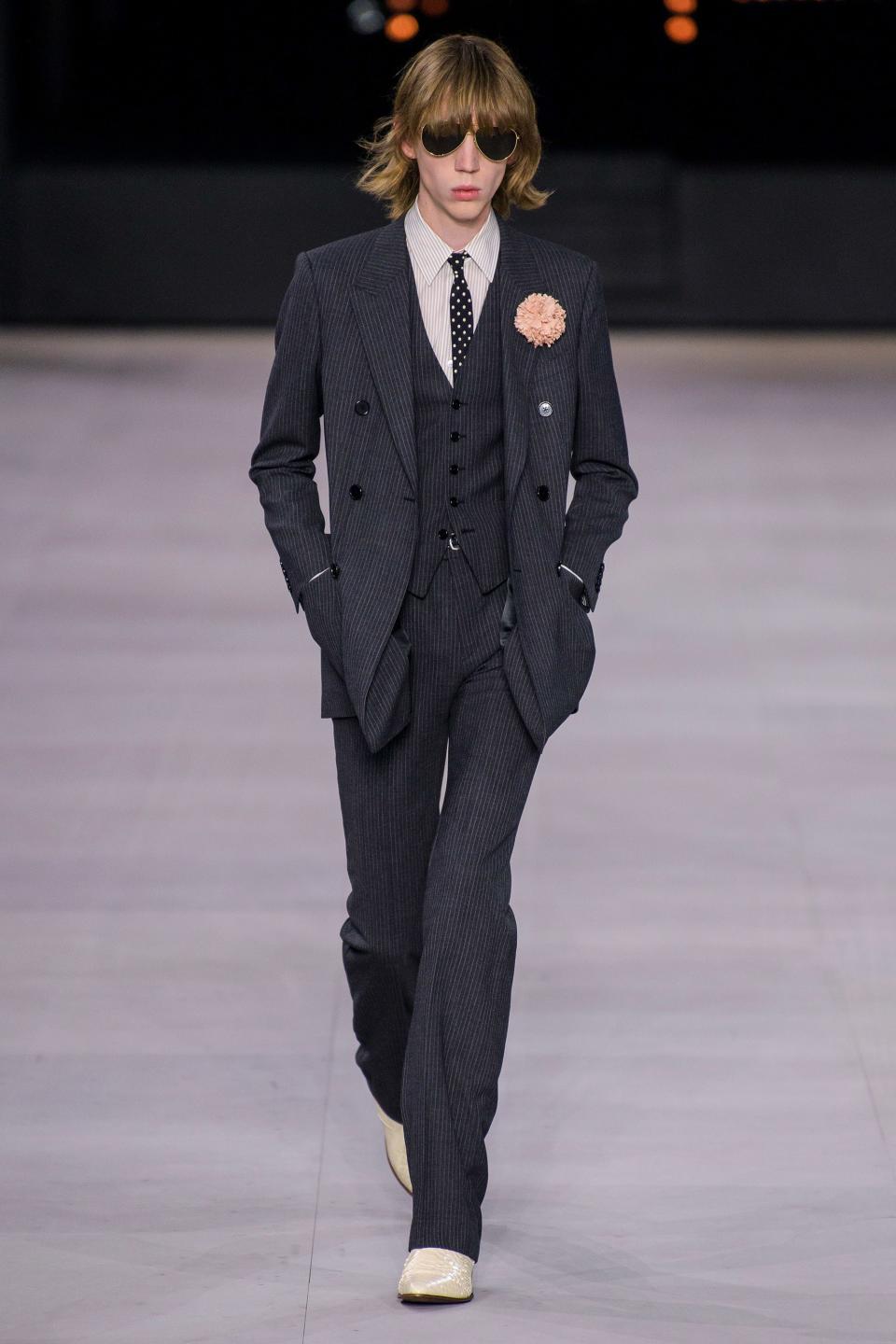
Celine
“I have nostalgia for things I have probably never known…. There is no irony here.” Okay. Hedi Slimane didn’t speak these words—direct quoting not being his style—but he let the artist David Kramer say them for him in a book of posters given out at the show. The “return to boyhood” dreams have been a recurring theme in the menswear collections this season. The connection Slimane made with Kramer’s work revealingly tied it all back into that same thing. He laid it all out for a new generation in the repertoire of high-hocked, butt-clinching boot-cut pants and jeans, tiny bomber jackets, and all the minutely observed re-tailored throwbacks to rock-aristocracy style he marched out on the Celine runway.—Sarah Mower
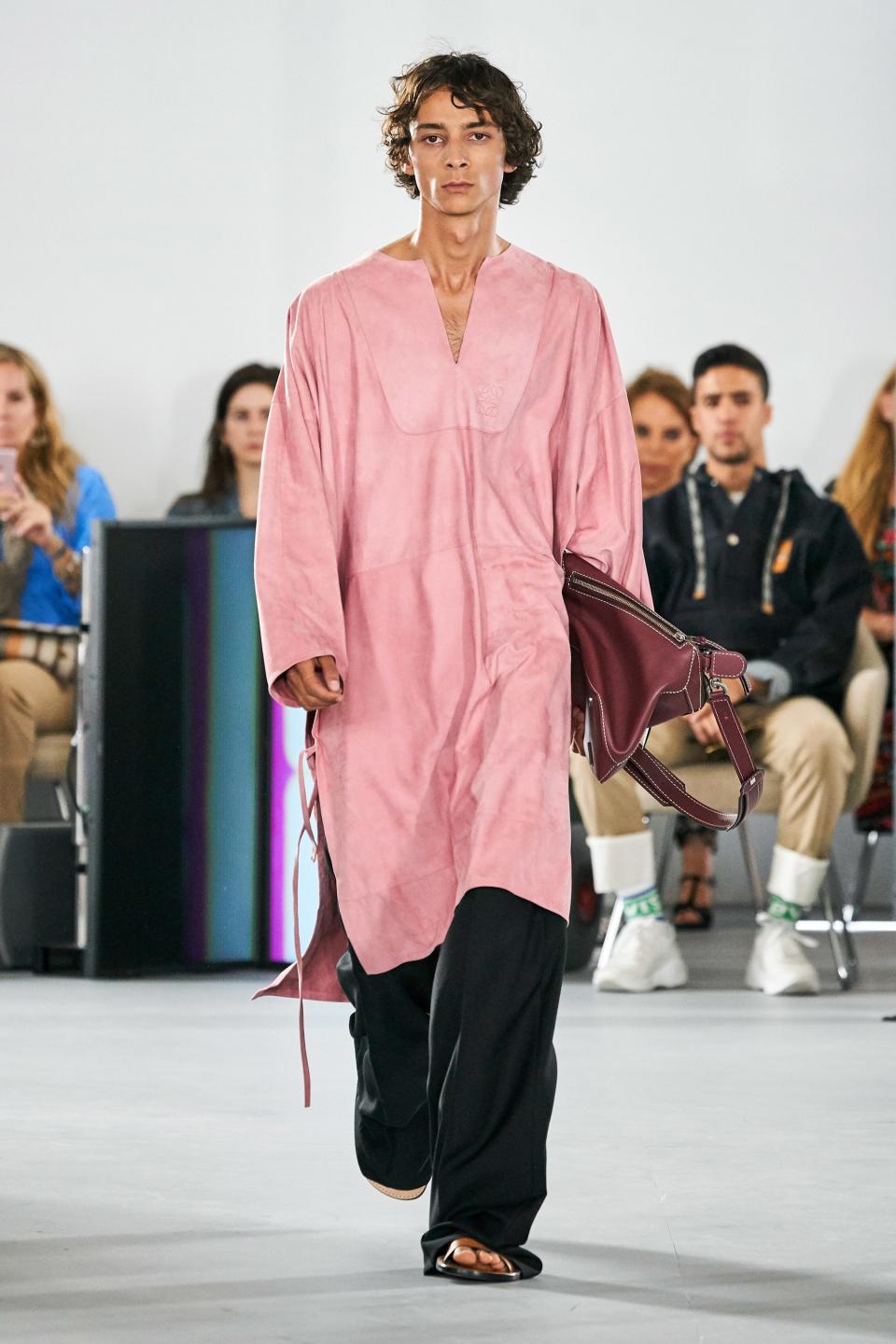
Loewe
There was a telling insight into Jonathan Anderson’s thinking at the end of his backstage briefing here. “Obviously, Loewe’s first really big moment was in the ’70s,” he remarked. That was before he was born, but the Anderson family spent their holidays in Ibiza—a center of neo-hippie lifestyle to this day. His experiment in launching Paula’s Ibiza as a Loewe sub-brand, spun out of thinking about the homemade market fare sold on the Balearic island, was kind of a test run to see how far he could go with artsy-craftsy casual bits and pieces. The answer is: far, very far. The direction he took this collection blew people’s minds.—S.M.
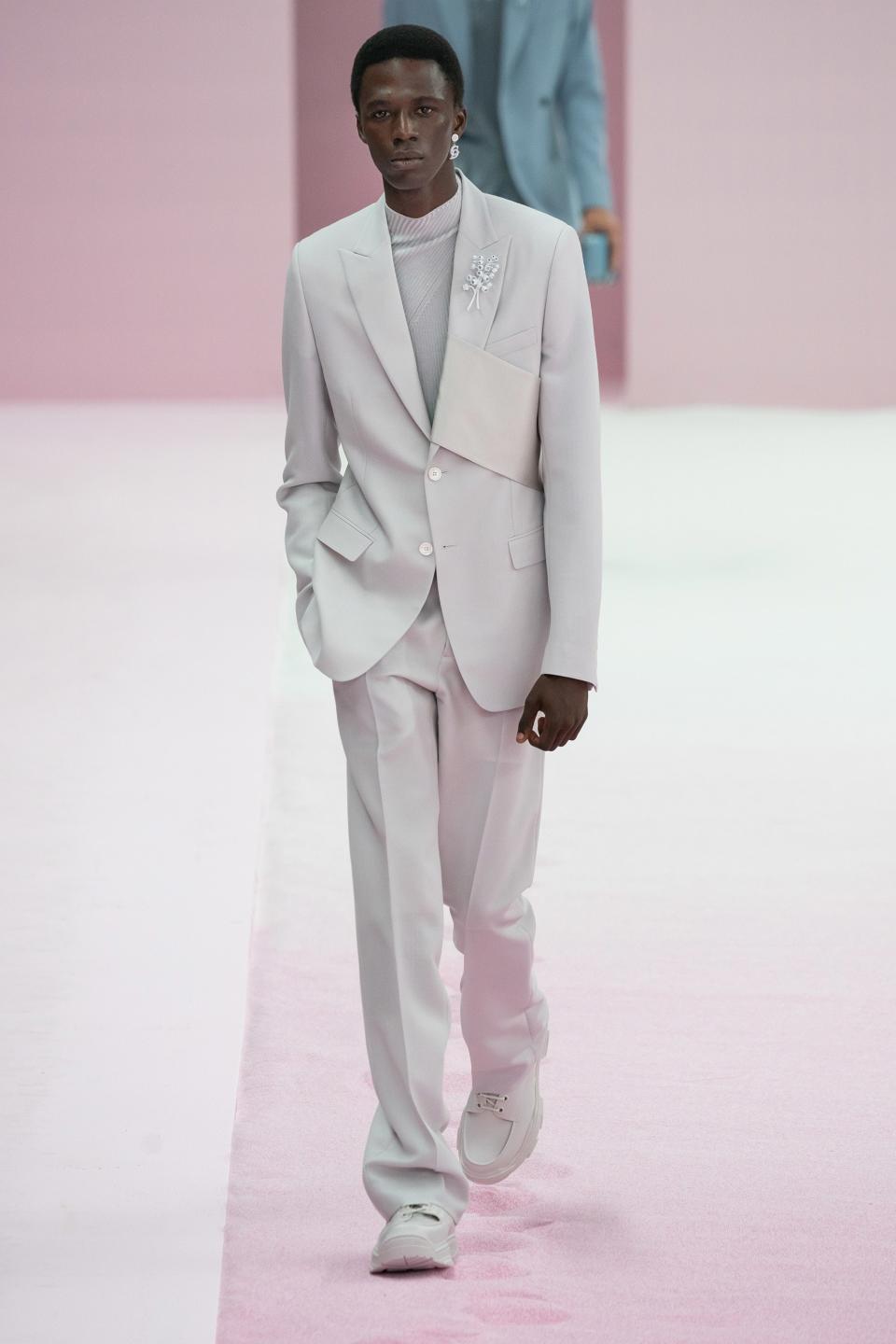
Dior Men
Kim Jones clearly believes that 21st-century men see the rigid gendered binaries their fathers and grandfathers conformed to as a thing of the past. He sees millennials and Gen-Z customers in Los Angeles, New York, Shanghai, and Seoul ready to adopt Toile de Jouy–print jumpsuits or organza bombers, delicately embroidered with blue hand-pleated swirling patterns. But he also intuits that these young guys see the classic template of the tailored suit with unprejudiced eyes. Jones’s insight is that men’s fashion at Dior can move forward by accessing the elegance of the past, wondering at the beauty of what can be discovered in the foundations. A sound way to construct a future.—S.M.
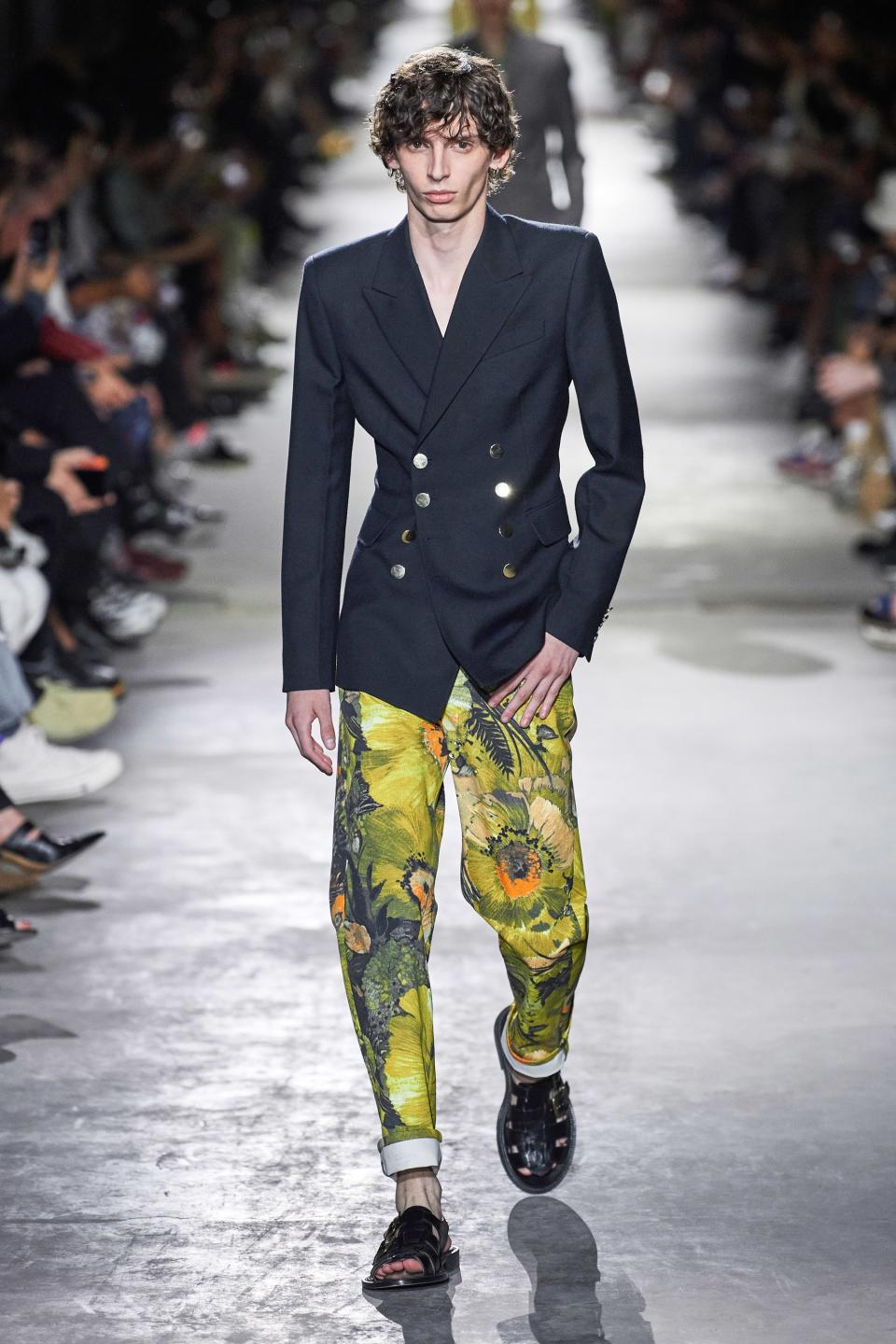
Dries Van Noten
There were overtly kinky touches, like short-shorts with belt chains, leather or mesh vests, and mashed-up army-pant chaps (sometimes in denim), but these were applied restrainedly. The strong-shouldered, intensely waisted suits—absolutely the most compelling twist on tailoring I’ve seen in seasons—were exemplary of a collection that incorporated the putatively feminine into menswear while simultaneously rejecting the sense of a two-dimensional gender dialectic. Both masculine and feminine and neither, this was a wondrous collection of clothes for elevated sybarites of every persuasion. And great to get laid in.—Luke Leitch
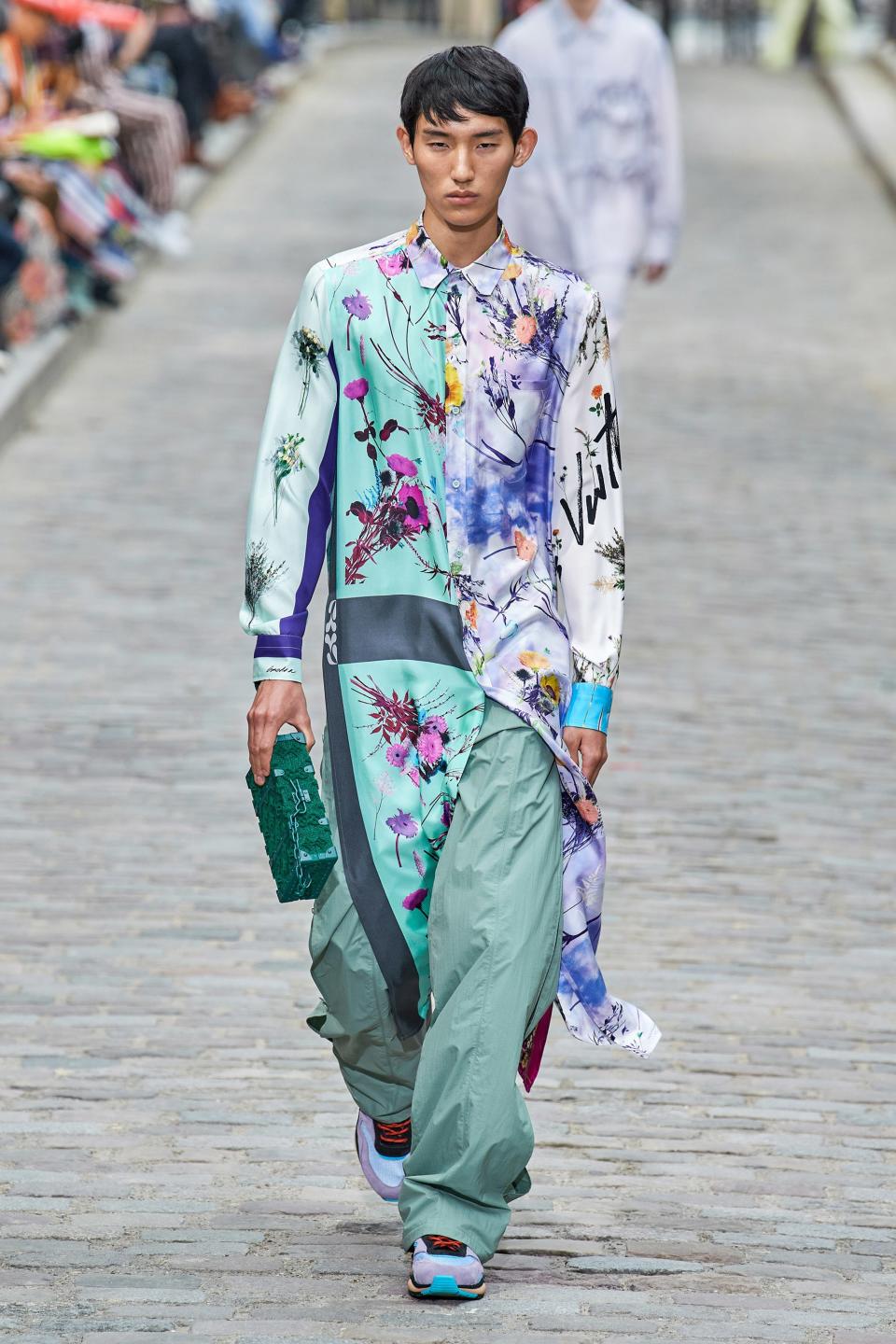
Louis Vuitton
Program notes pointed out that Virgil Abloh had chosen the idea of wild flowers—never segregated in nature—as a metaphor for diversity. He’d brought in a florist to decorate a jute harness and the inner brims of straw hats with fresh flowers. It didn’t read as a naive, bucolic narrative so much as one of this season’s connection points between popular handmade craft and the work of the skilled people who work at luxury goods houses. “There is an atelier here with 24 sewers, and that’s what makes it different,” Abloh observed. You sensed his relish in cultivating super-sophisticated effects, like flower embroideries climbing up tulle coats, and a couple of immensely luxe iterations of hoodies, made from minutely pleated chiffon. “I’m learning, and taking much more of a couture approach.”—S.M.
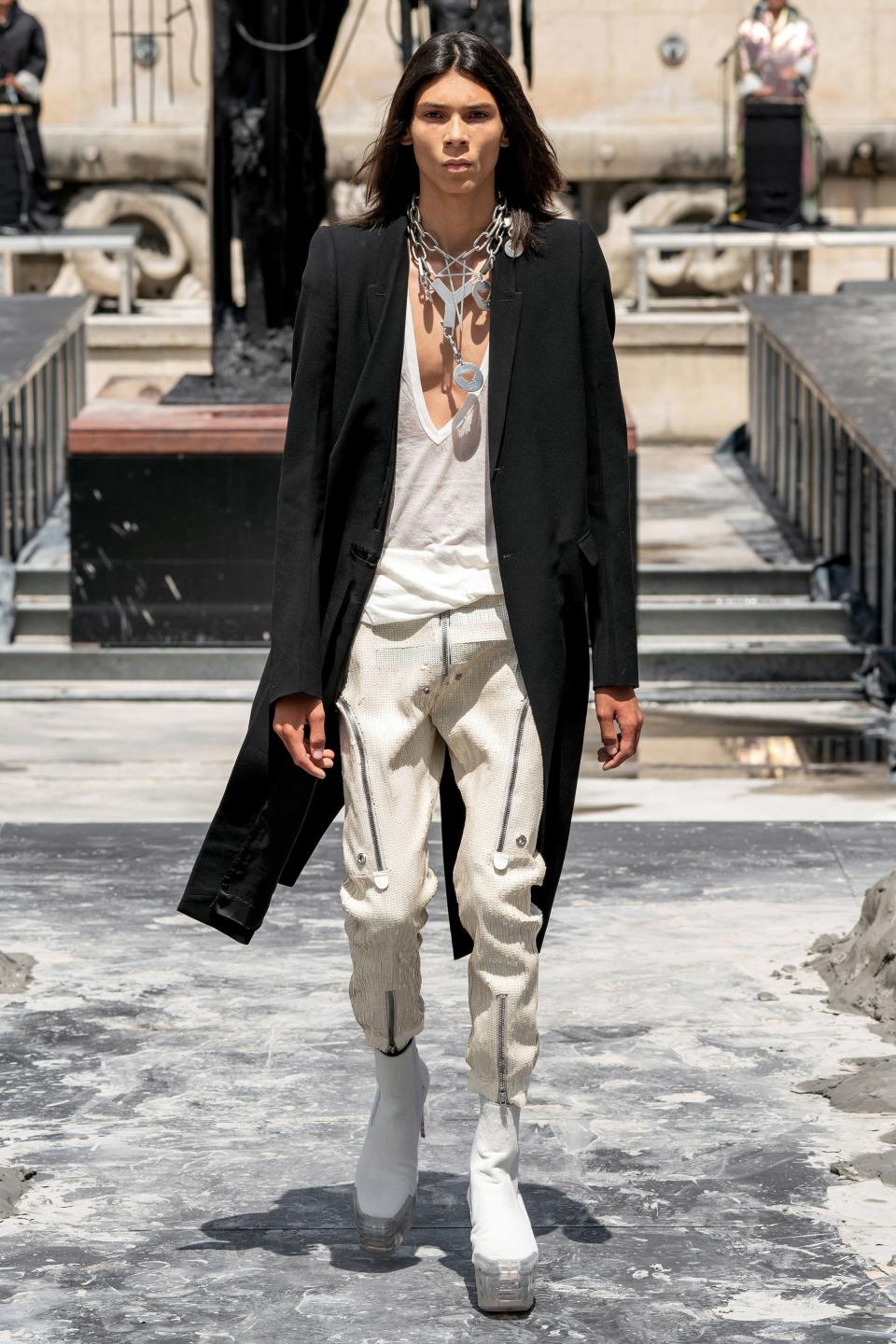
Rick Owens
This was a Rick Owens collection abrim with highly wearable pieces. The sequins incorporated one-color oversize tailoring and looked pleasingly sleazy while metallic-finished outerwear boasted a brutal industrial shimmer. In collaboration with Champion, Owens primitivized its cotton jersey via transformation into togas and loincloths. Zippered jumpsuits, some half-worn to optimize ab exposure, looked toughly utilitarian, while short-hemmed tailored jackets in white snakeskin over low-neck loose T-shirts and white sequined zippered pants appeared twistedly slick—especially when teamed with a pompadour. According to Josef Albers, “In art, tradition is to create, not to revive,” and in this highly artful collection we saw an outstanding expression of the tradition in clothing created by Owens.—L.L.
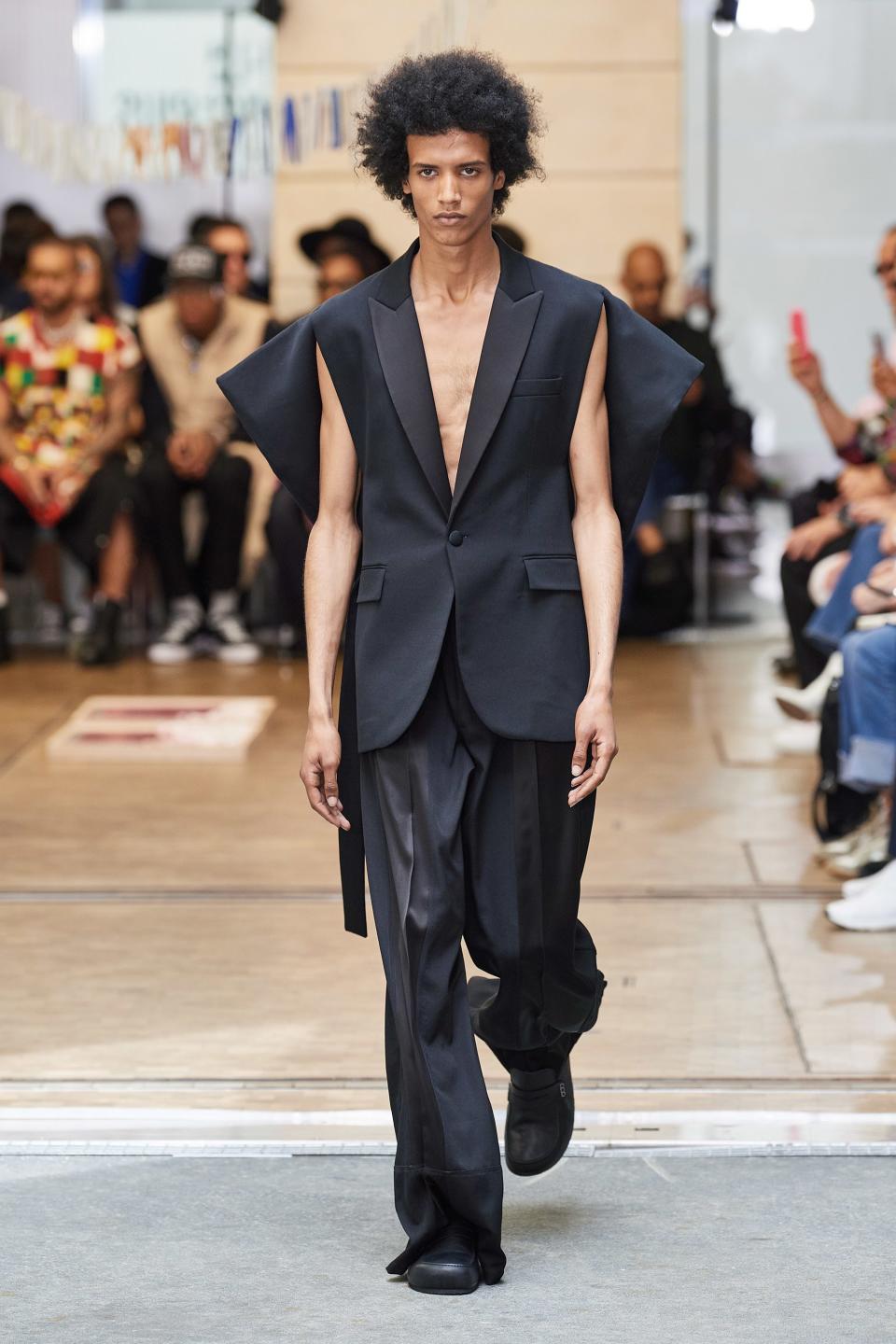
JW Anderson
“Craft goes machine” was a phrase Jonathan Anderson dropped into the conversation. It’s a tagline he used right at the beginning of his career, when he was already obsessed with handmade techniques, highlighting the nostalgia for the human touch that had gone missing in the era of globalization and fast fashion. In this collection, he made the connection with “hand-knitty, do-it-yourself kits, which kind of look like they’ve been passed down.” The slashed effects came from a memory of his teenage sister Chloe, at home in Northern Ireland, working up shredded T-shirts and threading them with plastic beads. “But the raw edges have been taken away.” Anderson’s talent for elevating craft has become ever-more relevant. It’s the key to the success he’s brought to the LVMH-owned label Loewe, where he is creative director. In his own collection, where it originated, it more than held its own.—S.M.
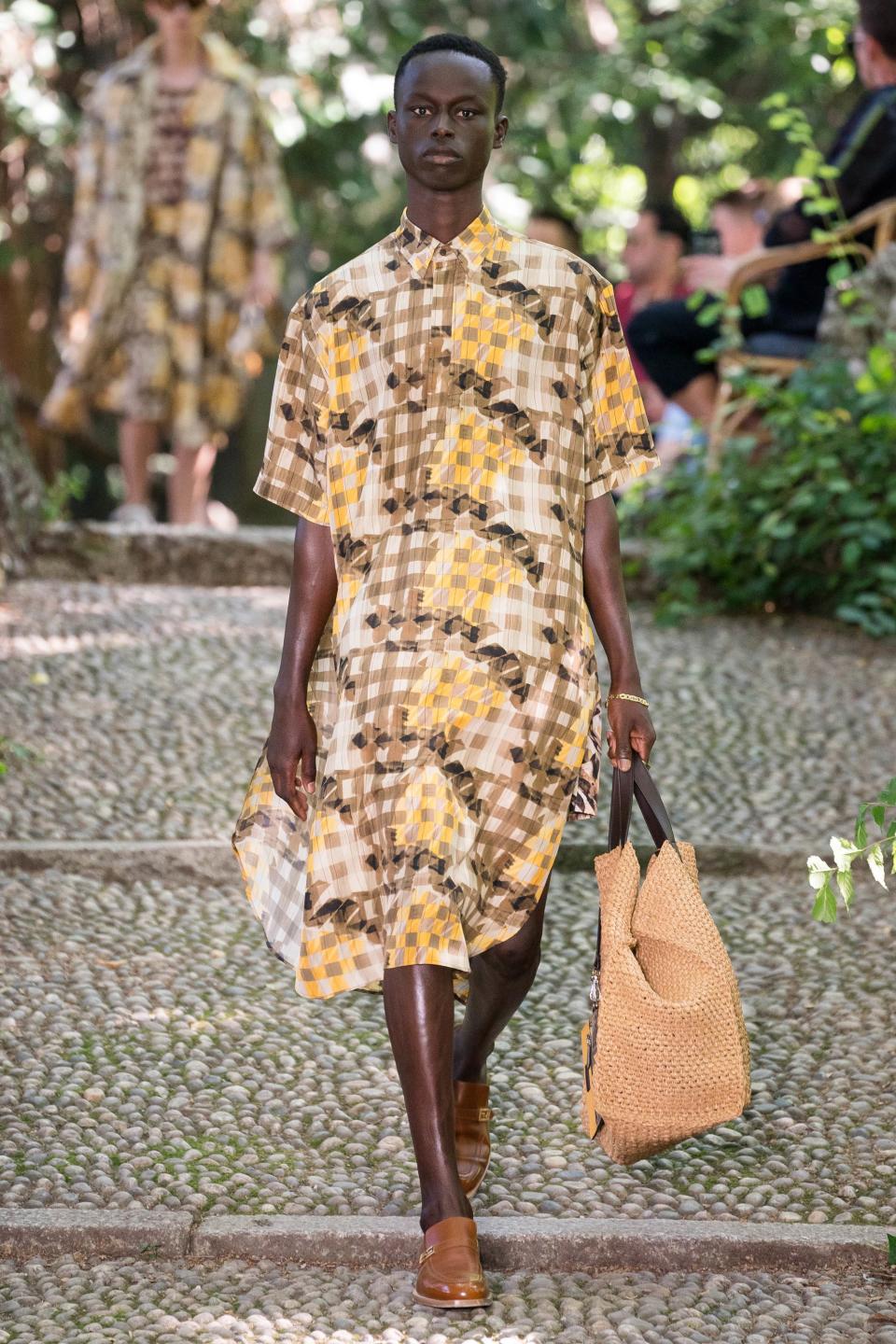
Fendi
When weekending at her country place outside of Rome, Silvia Venturini Fendi likes to garden. She grows vegetables, roses, and—when the birds and bugs don’t get there first—fruit, too. Today Fendi transplanted this most bucolic of pastimes to her next-summer menswear collection. To add extra flourish, she applied a sprinkling of creative fertilizer in the form of a collaboration with this season’s guest artist, the film director Luca Guadagnino.—L.L.
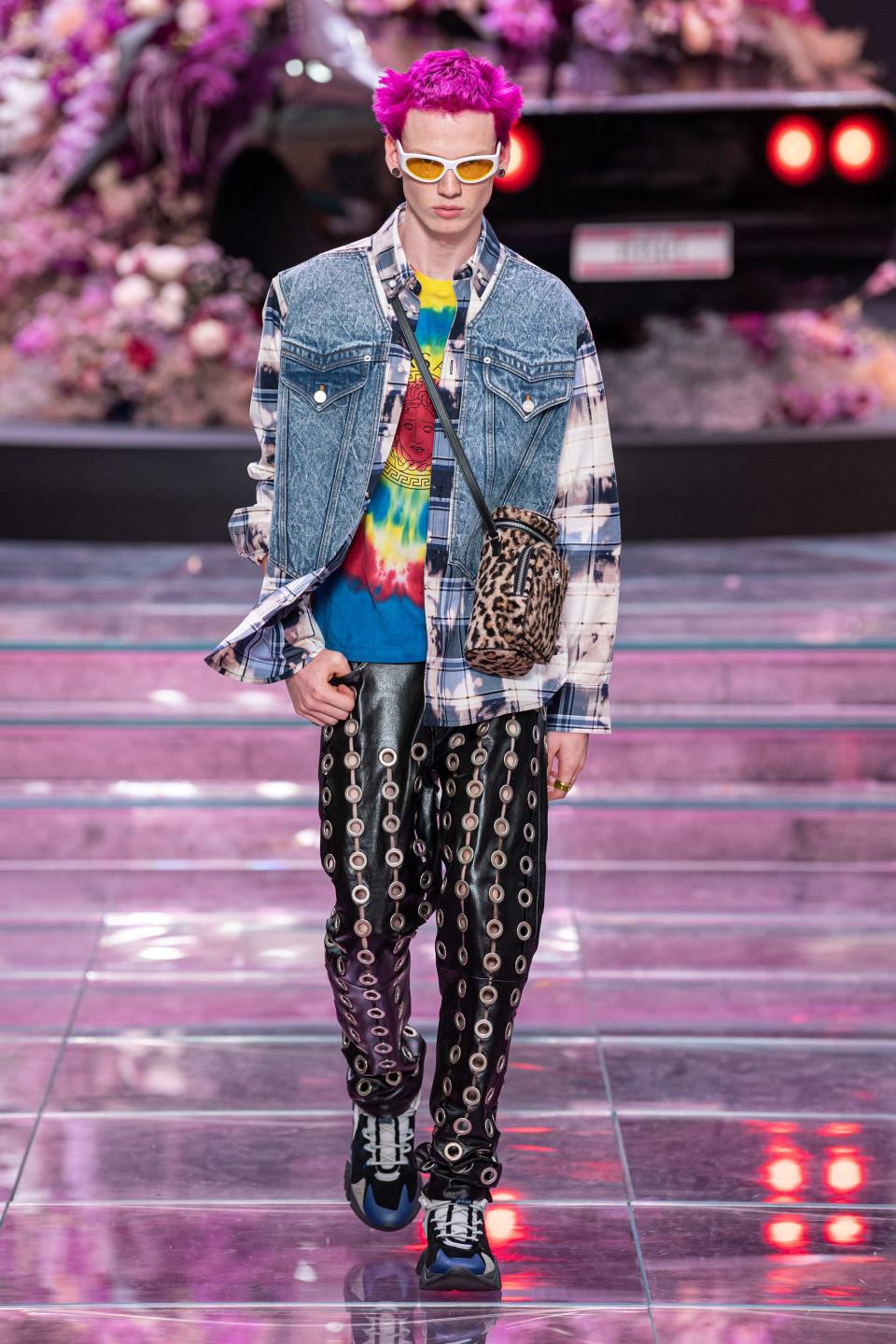
Versace
One lavishly classical Versace touch here was the amphora prints and Lurex knits. Printed vintage Versace fragrance ads on T-shirts and denim were yet another archival flourish. There was a fun, provocative sensuality in the slightly kicky jersey pants worn below tailoring, which came in black or leopard print and floral versions in vertical rib-knit, and a carefully thought through—and Keith Flint–inflected—riff on post-punk in workwear pieces that smashed check against denim. The complementary women’s looks—mostly legs-to-there Versace standard mind-melters—added extra turbo boost to this high-energy Versace outing.—L.L.
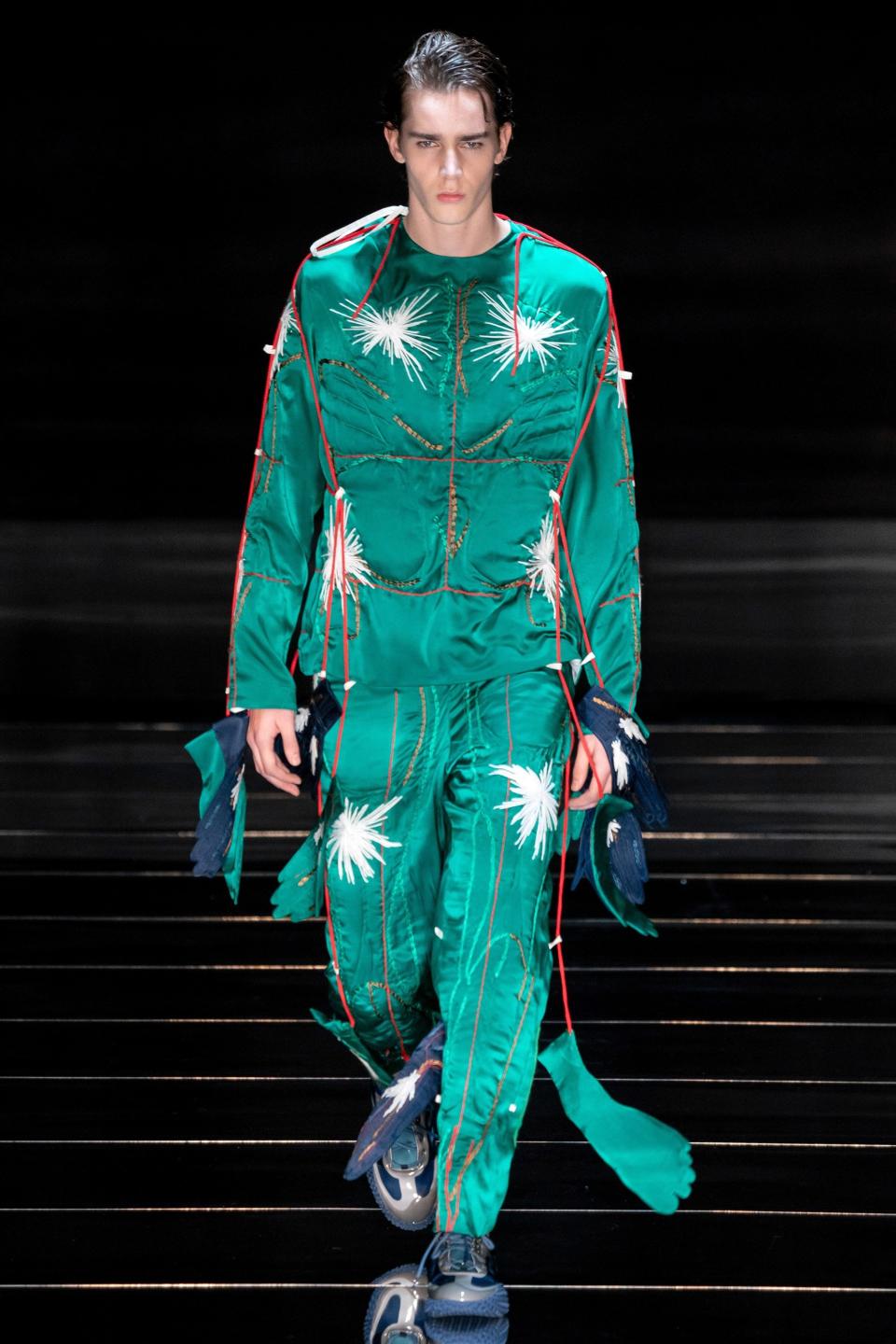
Craig Green
Craig Green’s calling as a designer is dealing both with the physicality of bodies and the deep complexity of human minds. Sometimes, his creativity reaches a point of transcendence when both become almost see-through, and you could swear by the prickling of your skin that he’s looking into the soul. There, that sounds pretentious! Yet this is the strange associative trance Green’s collection produced in his audience as he addressed such subjects as the male anatomy, human skin, and the fine membranes that seem to link humans together across cultures.—S.M.
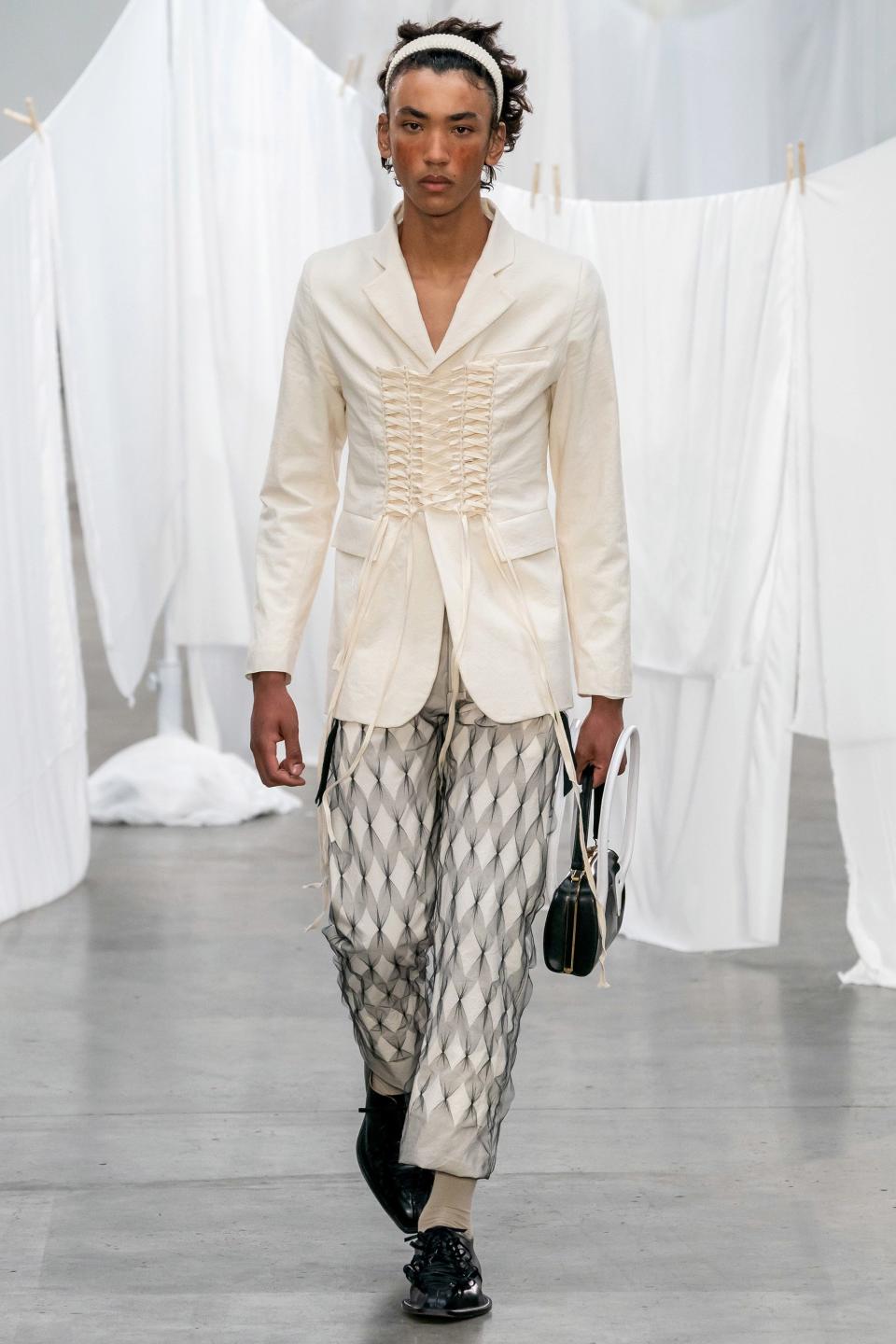
Stefan Cooke
Stefan Cooke and his partner Jake Burt have been so applauded since they stepped onto the fashion stage that they’ve had a funny sensation that they’re still role-playing the part of what “designers” are meant to be. The spotlight trained on what Cooke and Burt do is well deserved: the believable young masculinity their collections portray, its basis in inventing techniques that recast the structure of familiar garments—like the wonder they bring to the humble argyle sweater—and their playful knack for trompe l’oeil prints. All this, and a precocious talent for creating stuff that is so clearly wearable.—S.M.
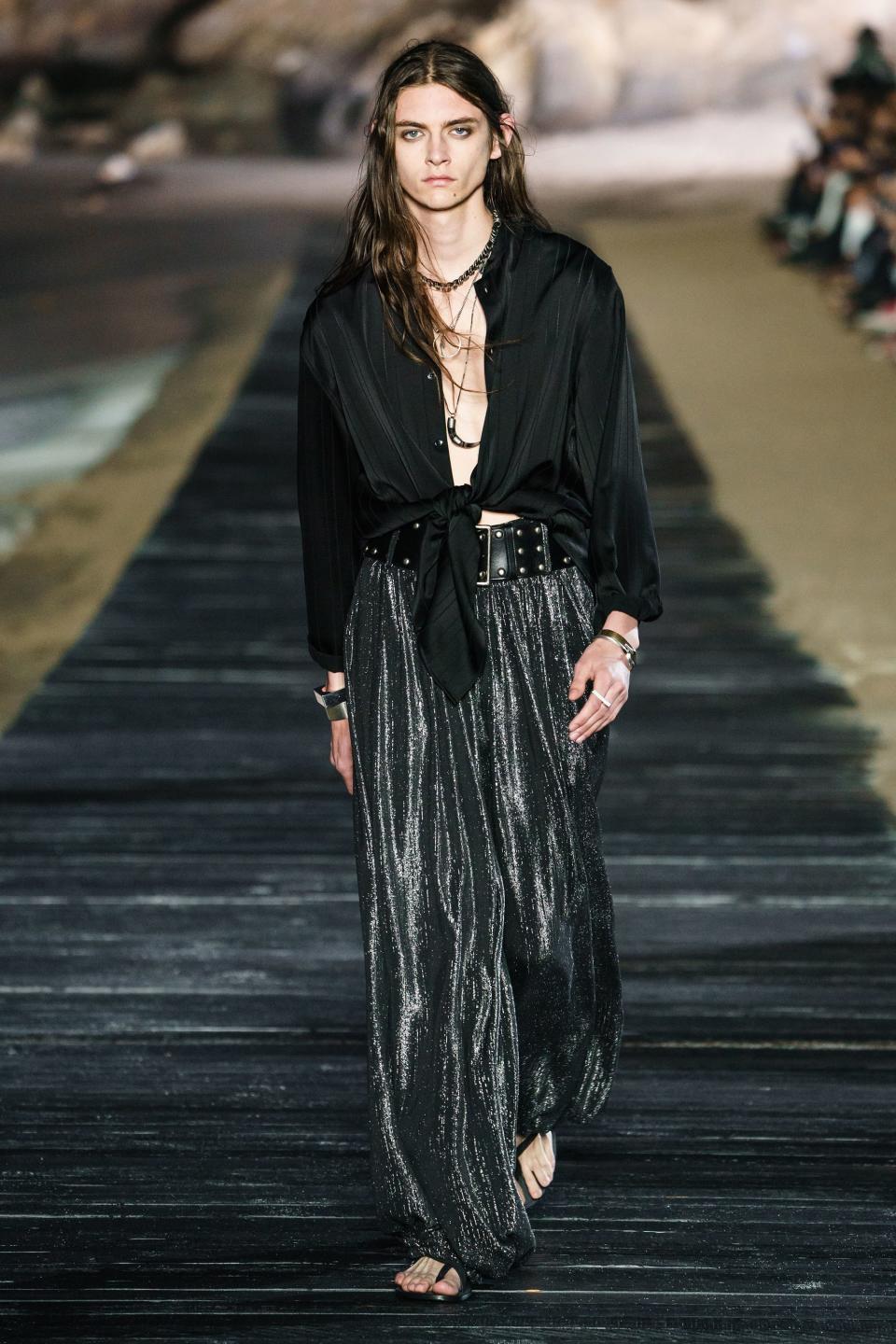
Saint Laurent
Some of the gender fluidity here came in unexpected forms. The shorts, which have been a mainstay of his women’s collections from the very beginning, made their men’s debut, as ragged denim cut-offs paired with a lean pinstriped jacket or an oversize trench. The blown-up proportions of the latter underscored the softer, looser—sensual, even—approach Anthony Vaccarello took here. It was a first for him, an indication he’s finding his comfort level with his men’s while also being able to dig in and challenge himself. “I love it now,” he said. “It might sound selfish to say this, but I really project myself into the pieces. I’m trying everything on.” Even, he said, the finale looks, a terrific line-up of super-wide, super-fluid black pants, in gauzy knit or a crushed pleated silk, billowing and flowing from a high and often belted waist. Vaccarello showed them as the gray-skied swelling Pacific Ocean finally slid into darkness, but it looked a whole lot more like him seeing things in a new light.—Mark Holgate
Originally Appeared on Vogue

